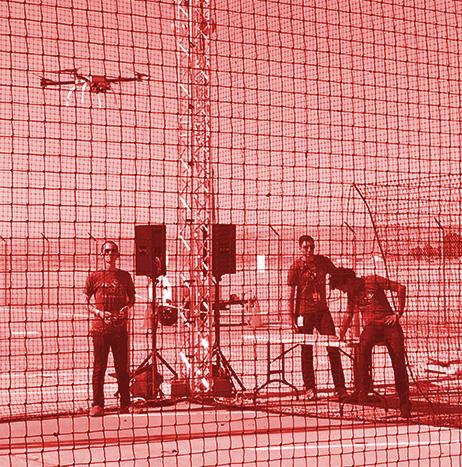Cape and the Tijuana Public Safety Department have partnered to launched Mexico’s first Drone as a First Responder (DFR) program.
Through the program, two UAS equipped with the Cape Aerial Telepresence platform will be utilized as part of the department’s daily operations to provide access to real-time aerial visibility and intelligence for officer support in both the command center and the field.
During the program, Cape-enabled UAS will support emergency response efforts within a three-kilometer radius of the Tijuana Public Safety Department headquarters. The focus will be on “improving both operational efficiency and the safety of both first responders and the greater Tijuana community,” the entities say.
Air
Air
Silent Falcon introduces Silent Falcon Extended Endurance UAS
Silent Falcon UAS Technologies has introduced its new Silent Falcon Extended Endurance (EE) UAS.
Equipped with the newest technological innovations in solar panels, battery and solar power conversion, the Silent Falcon EE UAS can stay aloft for up to eight hours during the day, and four hours at night.
The communications capabilities of the Silent Falcon EE have also been upgraded, thanks to the inclusion of three MIMO MANET radios at the Ground Control Station with the SF TriAntenna configuration. Not only does this configuration greatly increase connectivity, bandwidth and reliability, but it also allows one of the radios to be used to connect a remote site, such as a command center to the radio network.
From Unmanned Systems magazine: Drones offer safe, efficient tool for insurance companies
Over the years, drones have proven to be extremely beneficial for the insurance sector, offering safe and efficient tools for companies to use during various tasks.
In 2014, State Farm — a pioneer in the insurance sector for using this technology — began looking at how to use drones for claims. Just a few short years later in Aug. 2017, the company began using drones for real-life claims and hasn’t looked back.
“They’ve definitely provided a tool that we did not necessarily have in the past,” drone pilot Jared Brose tells Unmanned Systems. “They allow us to get out there and get in the air as quickly as possible and handle a claim as quickly as possible.”

Vestas selects Sulzer Schmid, WKA to inspect wind turbines using UAS
Wind turbine company Vestas has selected Sulzer Schmid, a Swiss UAS technology company for rotor blade inspections, and WKA, a blade inspection and repair service provider, to conduct a large UAS-based blade inspection campaign in Scandinavia on 1,250 wind turbines in less than 12 weeks.
Located across Sweden and Finland, the blades of the 1,250 Vestas turbines must be inspected by the end of June, just in time for the beginning of the repair work season, which traditionally takes place during the less windy summer months.
To meet this tight deadline, Vestas opted for UAS, which is the “only approach that can meet its high-quality standards within such a demanding time-frame,” the companies say.

DJI equipping new consumer drones with airplane and helicopter detectors
As part of a 10-point plan to “ensure the world’s skies remain safe in the drone era,” DJI has announced that it will install airplane and helicopter detectors in new consumer drones.
AirSense technology, which receives ADS-B signals from nearby airplanes and helicopters and warns UAS pilots if they appear to be on a collision course, will be integrated into all new DJI drone models released after January 1, 2020 that weigh more than 250 grams. According to DJI, this will be the largest single deployment of ADS-B collision awareness technology to date, and will set a new standard by putting professional-grade aviation safety technology in drones available to everyone.

University of Zurich researchers develop drone that can autonomously dodge objects thrown at it
According to the Verge, researchers from the University of Zurich have developed a UAS capable of autonomously dodging objects thrown at it, even at close range.
“We wanted to really push the boundaries and see what these robots are capable of,” University of Zurich research Davide Falanga tells the Verge.
Purdue University researchers develop flying robots that emulate hummingbirds
Purdue University researchers have engineered flying robots that behave like hummingbirds, and could ultimately go to places where UAS can't.
The robots are trained by machine learning algorithms based on various techniques the bird uses naturally every day, meaning that after the robot learns from a situation, it “knows” how to move around on its own like a hummingbird would, such as knowing when to perform an escape maneuver.
The robot can also teach itself new tricks, thanks to the combination of artificial intelligence with flexible flapping wings. For example, the robot can’t see as of right now, but it senses by touching surfaces. Each touch alters an electrical current, which the researchers realized they could track.




